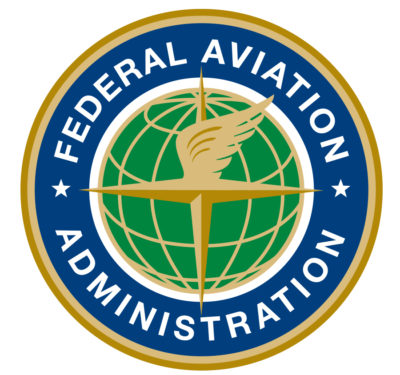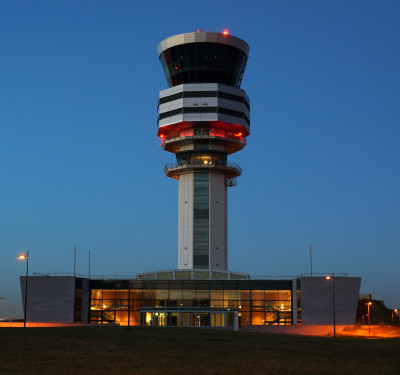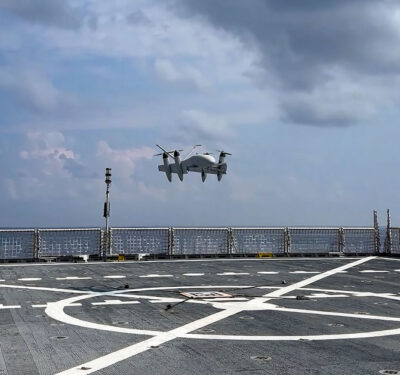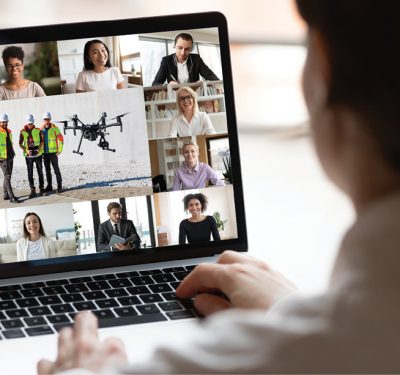 Miles off shore, anchored in carefully selected currents, the pens of an open ocean farm can look like submerged circus tents or huge geodesic bubbles. Tougher than their close-to-shore cousins, these giant operations are capable of raising thousands of tons of bass, snapper, tuna and other ‘finfish’ while staying relatively close to customers in what is now a global market for seafood.
Miles off shore, anchored in carefully selected currents, the pens of an open ocean farm can look like submerged circus tents or huge geodesic bubbles. Tougher than their close-to-shore cousins, these giant operations are capable of raising thousands of tons of bass, snapper, tuna and other ‘finfish’ while staying relatively close to customers in what is now a global market for seafood.
The remoteness of these operations offers a number of advantages, including cleaner water and potential economies of scale. But operating at such distances poses challenges in even the most benign environments. The fish in these underwater corrals will need tons of feed delivered daily and their enclosures cleaned as well as regular monitoring and in some cases medical treatment. All of these functions and others are, or can be, supported by robotics and autonomous systems—in fact integrating unmanned systems is essential for open ocean farming to succeed.
“It takes a certain amount of automation to make (open ocean aquiculture) viable,” said Donna Lanzetta, the CEO of Manna Fish Farms. It doesn’t work, especially miles offshore, she said, unless there’s automation and robotics involved.
Rising Demand for Fish
Lanzetta should know. She is in the process of setting up a multi-trophic farm 16.2 miles off the coast of Eastern Long Island. Starting with one enclosure or pod she plans to grow her farm into a 24-pod operation focused on raising striped bass and eventually tuna. Interspersed among the pens will be equipment to grow mussels and clams, which are not only saleable but naturally help clean the water. She also has plans to grow kelp and other marketable seaweed including a particularly interesting species called dulse.
“I heard that when you pan sauté it, it tastes like bacon,” Lanzetta said.
Part of what spurred Lanzetta to launch Manna Fish Farms—which will be the first such farm on the East Coast and perhaps the first in the entire United States—is the rising demand for food, especially protein.
The world’s population is projected to increase dramatically over the course of this century rising from 7.3 billion in 2015 to 9.4 billion in 2050, according to projections from the U.S. Census Bureau, said Hauke Kite-Powell of Woods Hole Oceanographic Institution (WHOI). Earlier projections for the maximum human population on the globe also have been resized upwards, he said.
“We’re definitely poised to exceed the 9 billion mark before too long and that means a lot more people to feed, he told a Jan. 11 workshop on aquaculture organized by WHOI’s Center for Marine Robotics.
Not only is the number of people growing, the demand per-person for protein is rising as people become more affluent.
“Seafood demand is growing and at a macro level it is driven by an increase in the rising middle class from the growing Third World,” said David Kelly, the chief technology officer for InnovaSea, which builds mariculture equipment. “As the middle class rises, the demand for protein goes up—the demand for protein goes up, fish goes with it.”
Given these trends, said Kite-Powell, “it’s likely that we’re going to need about another probably 2 million tons of live seafood in the U.S. by 2050 and globally more than 40 million tons per year.”
It has been years since the wild fish supply has been able to meet demand, he told attendees.
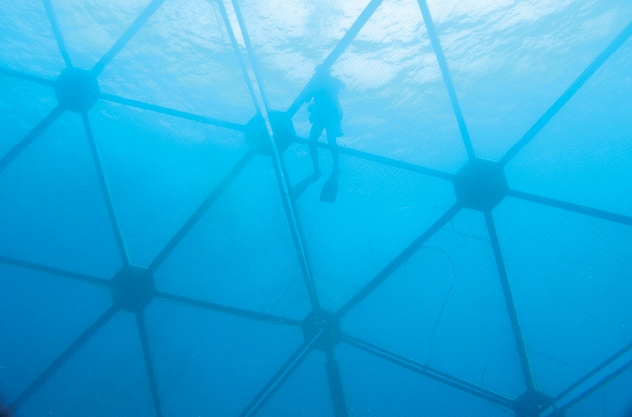
“As far as seafood protein is concerned,” Kite-Powell explained, “the wild capture fisheries of the world stopped keeping pace with increased demand for seafood as of two decades ago—two and a half decades ago—and all of the growth in global seafood production since then has effectively come from fish farming, from aquaculture. And there’s no reason to believe that that’s going to be any different going forward.”
The world’s appetite for fish is driving growth in aquaculture and that growth is likely to accelerate, Kite-Powell said, but many of the really good, near-shore locations for new operations are either already being farmed or are being used for other things. For that reason he sees marine production moving further away from the coast to open ocean farms, a new form of offshore aquaculture called mariculture.
But where will these farms be located and what kind of technology will they need?
The Goldilocks Problem
While the potential for mariculture is vast, certain environmental conditions are necessary for an open ocean farm to be successful.
“I call it the Goldilocks problem,” Kelly said. “When you go offshore, if you look at water depth—you can be too shallow, you can be too deep, you can be just right. If you look at current—you can be too slow, you can be too fast, you can be just right. And the issue on current is that you need a certain amount of current for water exchange (to supply) dissolved oxygen. If you have too much current they (the fish) spend all their energy fighting the current and not growing.”
There are some 190,000 square kilometers of the world’s oceans that are particularly suited to open ocean aquaculture, according to a 2013 study by the United Nation’s Food and Agriculture Organization. To get to that number researcher James Kapetzky started with the world’s exclusive economic zones (EEZ), that is the regions off a county’s coast where a state has special rights regarding the use of marine resources. He then looked at the temperatures, depths and currents in those areas to see where three representative species—cobia, Atlantic salmon and blue mussel—could be raised successfully. He eliminated from consideration those areas that were more than 25 nautical miles (46.3 km) from a port as not being cost effective, leaving a total of 189,468 square kilometers that would work well for open ocean fish and mussel farming.
“That’s roughly the size of the country of Syria,” said Kelly, “or, if you are more U.S.-centric, it’s slightly smaller than the state of Washington. That’s the potential area.”
The FAO also found that, so far, very little of that potential has been realized.
“Nearly all of present-day mariculture takes place in sheltered areas, not offshore. Interestingly, about 44 percent of maritime nations are not yet practicing mariculture,” wrote the FAO. “About one-half of mariculture production consists of aquatic plants, but there is as yet little production of plants offshore.”
With demand surging and plenty of room for new farms, the mariculture industry appears poised for a boom.
The demand is going to be there, asserted Kelly, the former CEO of autonomous underwater vehicle maker Bluefin Robotics.
Kelly is not the only one who thinks so. His firm has benefitted from venture capital and there was at least one potential early-stage investor in the WHOI audience. Though it is hard to say how many investors are specifically interested in open ocean farming, Angle.co, a website dedicated to startups, has 54 companies and 974 investors on its list of aquaculture angel investors.
The amount of interest is amazing, Kelly said, and includes investors and private equity “leaking over” from the agriculture sector. There are also “bigger-thinker, industrial companies.”
“There is getting to be more focus and buzz around it,” he said.

Rising Opportunity
The market potential extends beyond the farms themselves to the sectors that support them, the experts suggested.
Robotics and automation are already used in farms today, Kelly said, especially for feeding. When you consider the scale of operation at an industrial finfish farm it’s easy to see why.
“A fish is going to eat 1 to 3 percent of his body weight a day, and they feed seven days a week, 365 days a year,” Kelly said. “So if you start to think of the scale of feeding involved with a top-of-the-line, industry-level farm, take a 20,000 square meter (containment) pod, which is pretty standard in the salmon industry, stock it with 20 kilograms per meter of fish; have it eat 1 percent of its weight a day—and you’re looking at four metric tons of feed per day for that pen. You start to multiply that out by a week and now you’re to 28 to 30 metric tons of feed that that pen is going to consume each week.”
The feeders are automated and deliver the food to the fish through a tube, Lanzetta said.
“We will be utilizing a robotic device called an automated feed-buoy,” she said, “that was developed by NOAA (the National Oceanic and Atmospheric Administration) and the University of New Hampshire. It holds 20 tons of feed and it will feed four pods—it’s big.”
Cleaning the pens is also a huge job. Both Kelly and Lanzetta would like to find the equivalent of an underwater Roomba—a robotic system that would, without a lot of human interaction, keep enclosure walls clean.
“You are putting stuff into the primordial soup of life,” explained Kelly. “Mother Nature sees it, likes to grow things on it.”
Biofouling causes increased drag on the equipment. It also reduces the water flow through the cage and therefore the amount of dissolved oxygen reaching the fish—causing stress.
“We have to clean the exterior of the pods,” Lanzetta said. “It’s very important that it be kept clean. Something that might attach and go around the outside of the pod and clean off what grows there. That could be very interesting to me.”
Unfortunately, Kelly said, the capabilities of the systems available today are limited.
“Coming from an autonomous vehicle-technology snob perspective, it sort of looks 1950s to me,” Kelly said, “but it works and it may make money, so it is what it is.”
The problem is the current generation of pen cleaning equipment is a “brute force” solution that is clunky, difficulty to use and heavily operator dependent, Kelly said.
“The skill of the operator still has a large degree of influence on the effectivity of the equipment,” he said, “so I think there is a lot of opportunity.”
The level of operator involvement is a key metric because many mariculture operations will be located in areas where highly trained workers, like those supporting the oil and gas industry, are unlikely to be available.
The oil and gas industry is also a good analogy for how tough any mariculture equipment has to be. Equipment needs to be robust and easily maintainable, Kelly said.
“If you work with offshore oil and gas people and they’re trying to do something, regardless of whether the equipment works or not, they will try to do it—and they will try to fix it,” he said. “So if equipment goes out, …regardless of whether they’ve read the user manual or not, they will attempt to fix it and use it. And that’s just the nature of the environment that we work in.”
The Last Fish Out
There is also an opportunity for unmanned systems that can help get fish to market.
When the fish are fully-grown and the harvesting finally begins, farmers don’t want to leave a single fish behind for both economic and environmental reasons. Harvests take place over a number of days, typically by crowding the fish and then removing them from the pens.
“Crowding when you have a fully populated pen is one problem, Kelly said. Crowding when you’re down to the last 20 percent is an entirely different problem. It’s the last fish out problem, which in the worst cases means sending divers down to check their target practice with a spear gun to get the last fish.”
Kelly seemed to think, however, that there might yet be a technical solution. “We’re not done with harvesting. It’s one of my open challenges.”
While it’s not yet clear how robotics might solve the last-fish problem, unmanned systems have a clear advantage when it comes to another big job—the transport of mariculture pens.
The “movement of cages from one place to another is probably the most boring activity in the field of fish farming just because there are speeds that have to be respected,” said Clifford Goudey, a marine engineer with C.A. Goudey & Associates. “Whether the cage is filled with fish or not there are structural limitations to how fast it can go. Failures in those activities are generally because somebody’s got a date that night and they want to get to their destination and they push things too far. Taking people out of the loop in some of these processes is the best thing you can do.”
Pens might need to be moved from the main operation to be cleaned or transported to waters better suited to a different species. This mobility is one of the advantages of mariculture, which will be in a better position to avoid the sort of ocean changes triggered by global warming.
To handle the task Goudey is proposing a diesel powered TowDrone that uses two slow turning, large-diameter propellers—like those used to mix waste water ponds—to maneuver even the largest enclosures into place at a safe snail’s pace.
A TowDrone might also play a roll in treating fish that are ill. For example bathing farmed salmon in fresh water appears to be an effective treatment for amoebic gill disease and sea lice, parasites that feed on fish, according to a research paper in the Nov. 2105 journal Aquaculture. The challenge is getting fresh water to the fish.
“Right now they’re using well boats and large tankers to do this,” Goudey said, but farmers are considering hauling in fresh water in large flexible bags—bags that could be gently towed to the farm site.
Monitoring
It might be possible to get an early warning of lice or other problems if unmanned underwater vehicles could be used to better monitor fish stocks.
Lanzetta was intrigued by discussions of a UUV made to look and act like a fish.
“We might be able to pick up challenges early” if there was a way to put cameras in the tanks to swim with the fish to monitor their behavior, she said.
Sensors on underwater vehicles also could be used to help search out new mariculture sites, test continuously for environmental changes and warn of conditions leading to problems like toxin-laced algae blooms.
One of the issues with putting sensors other than cameras into a mariculture operation is that most of the sensors now available are intended for scientific use. As such they are expensive and require frequent calibration. Kelly said he wanted a sensor he could put in place and leave unattended for 6 months to a year.
Lanzetta is looking for something more simple. She said she would really like a way to clean the fixed cameras she plans to use for monitoring.
“We would be interested in the development of some robotic equipment that would actually clean off our camera lenses—like a little arm,” she said. “Someone please get working on it. It would save us once a week diving to clean our cameras.”
Cost Shavings
Trimming the number of manned dives and other new efficiencies will likely be the key near-term opportunity for unmanned systems, Kite-Powell said. Mariculture is inherently more expense than near shore operations, he said, but robotics and automation can help level the playing field.
The immediate opportunities lie in efficient unmanned systems that can lower operation costs.
“I think those efforts can probably directly address something like 15 percent of the current total cost component of offshore aquaculture operations,” Kite-Powell said. ‘If we do a really good job of that I think we come close to making offshore aquaculture cost competitive with near-shore operations.”
Kelly agrees that any new equipment has to improve the bottom line. Aquafarmers use technology and will adopt new equipment that is useful, he said, but they are price sensitive and hard-nosed.
“You’re not trying to go to a market that doesn’t know technology,” Kelly said. “They have used technology; they have adopted (it) where the pain points are hard. But it’s pretty much (that) it’s got to do the job and they need it. They’re not going to take technology just because it’s technology and it’s got blinking lights and buzzers and whistles.”
Despite the challenges, Kelly said he sees major advances in the next 5 to 10 years.
“We use salmon as a proxy because it’s the most sophisticated finfish aquaculture industry out there. …The amount of technology that has come into play in the things that they’re looking at buying over the last five years has grown quite a bit.”
It is new technology, particularly unmanned systems, really shift the way seafood is produced, Kite-Powell said.
“In the long run I think really innovative
application of automation may change the whole paradigm in ways we don’t know yet.”


